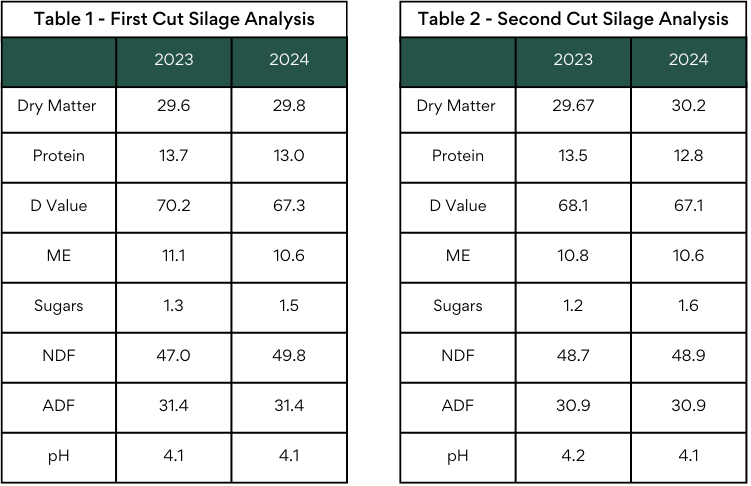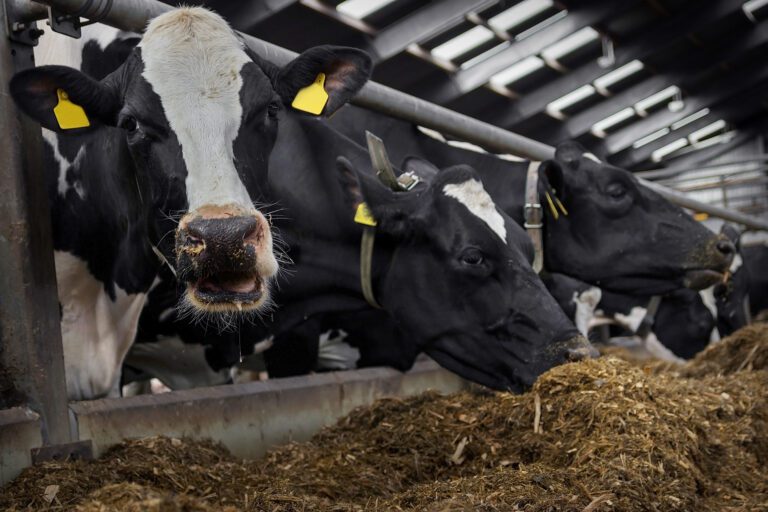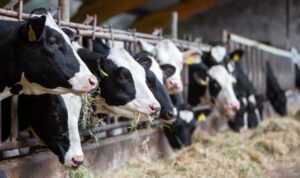With calculations made on forage availability for winter 24/25, it is essential to understand the quality and feeding value of forages, with the ultimate aim of maximising performance and optimising feed efficiency.
As grass silage is the primary feed source on most dairy farms, understanding its nutritional value and what it is worth is critical for establishing a solid foundation upon which winter-feeding strategies can be constructed.
Firstly, it is important to establish what milk yield the silage can support above the maintenance energy requirement of the cow. Meeting your target grass silage quality parameters, will facilitate increased milk from forage, and advocate for more efficient use of supplementary concentrate feed on farm:
2023/2024 Silage Comparison:
Table 1 below is the average silage analysis for first and second cut samples taken during 2023 and 2024. With the forage value known, the correct diet can be formulated to balance the energy, protein and fibre demands of the cow to maximise milk production and optimise cow health and fertility through concentrated feed.

Table 1 above demonstrates the variation in forage results across Drummonds customer base. First cut silage in 2024 is worth 1.5 litres of milk less per cow per day on average, in terms of energy (ME) intake.
With a positive forecast for milk prices, it is imperative that we correct this deficit through concentrate allocation to ensure the fresh cow isn’t being compromised, whilst improving milk components to align with processor requirements which will generate additional revenue.
3 Golden Rules for the Coming Months
Never compromise milk yield
- Reduced revenue will inflate fixed costs/litre
Never compromise milk components
- Poor components are a sign of poor health
- Increased culling/mortality rate
Never compromise fertility
- Long lasting effects
- Increased culling/mortality rate
The extensive range of Drummonds feeding solutions offers practical options to suit all feeding systems. Feed tables can be set and tailored to herd-specific M+ requirements across various software systems. This ensures that feed-to-yield systems are optimised by targeting concentrate feed more efficiently, minimising the risk of overfeeding or underfeeding cows, which can adversely affect herd performance and profitability.
This highlights the importance of conducting practical on-farm checks before implementing winter diets.
- Check feeders are working correctly and calibrated to ensure feed allocations are accurately dispensed.
- Check weigh scales on diet feeders – weighing heavy or light will skew dry matter intakes and miscommunicate with set M+ figures resulting in sub-optimal performance.
It is important to note that regular forage testing is recommended to promptly detect changes in diets and minimize stress on the rumen environment. Regular monitoring of cow performance indicators will ensure optimal results from tailored feed strategies throughout the winter period.
If you would like you like to maximise your milk output this winter, or get your forage analysed with a tailored feed plan, please contact Drummonds on 046 902 1641.



